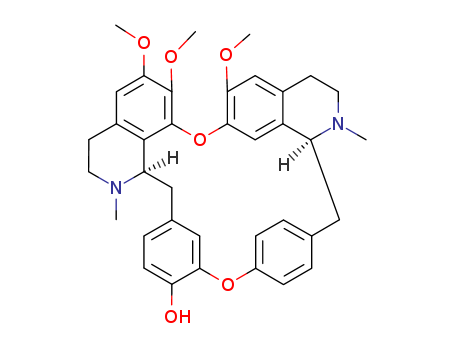- Chemical Name:CID 12300053
- CAS No.:478-61-5
- Molecular Formula:C37H40N2O6
- Molecular Weight:608.734
- Hs Code.:
- European Community (EC) Number:207-523-5
- Wikidata:Q104390668
- Wikipedia:Berbamine
- Mol file:478-61-5.mol
Synonyms:(1R,14S)-20,21,25-Trimethoxy-15,30-dimethyl-7,23-dioxa-15,30-diazaheptacyclo[22.6.2.23,6.18,12.114,18.027,31.022,33]hexatriaconta-3(36),4,6(35),8,10,12(34),18,20,22(33),24,26,31-dodecaen-9-ol;478-61-5



 Xi
Xi

